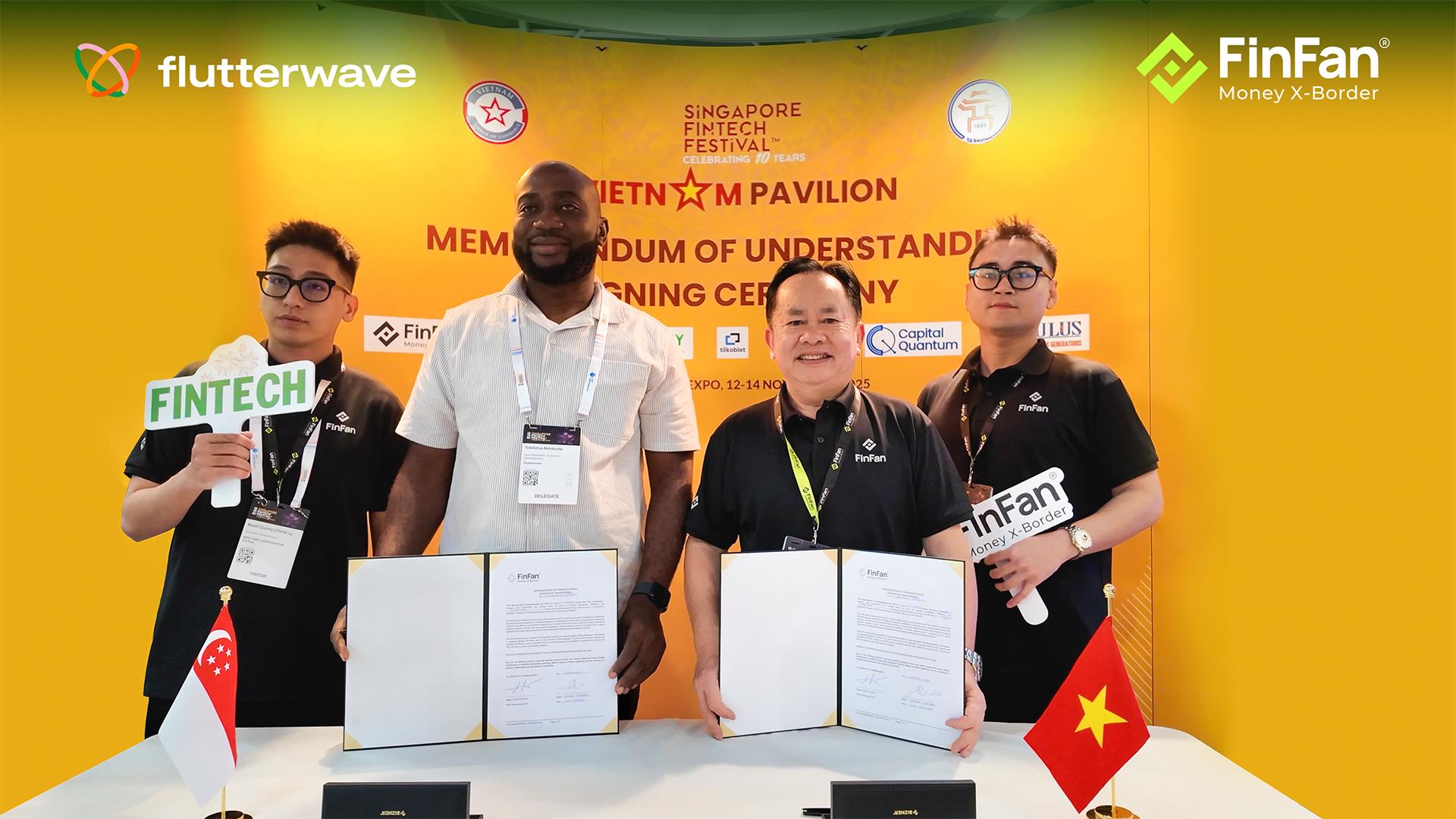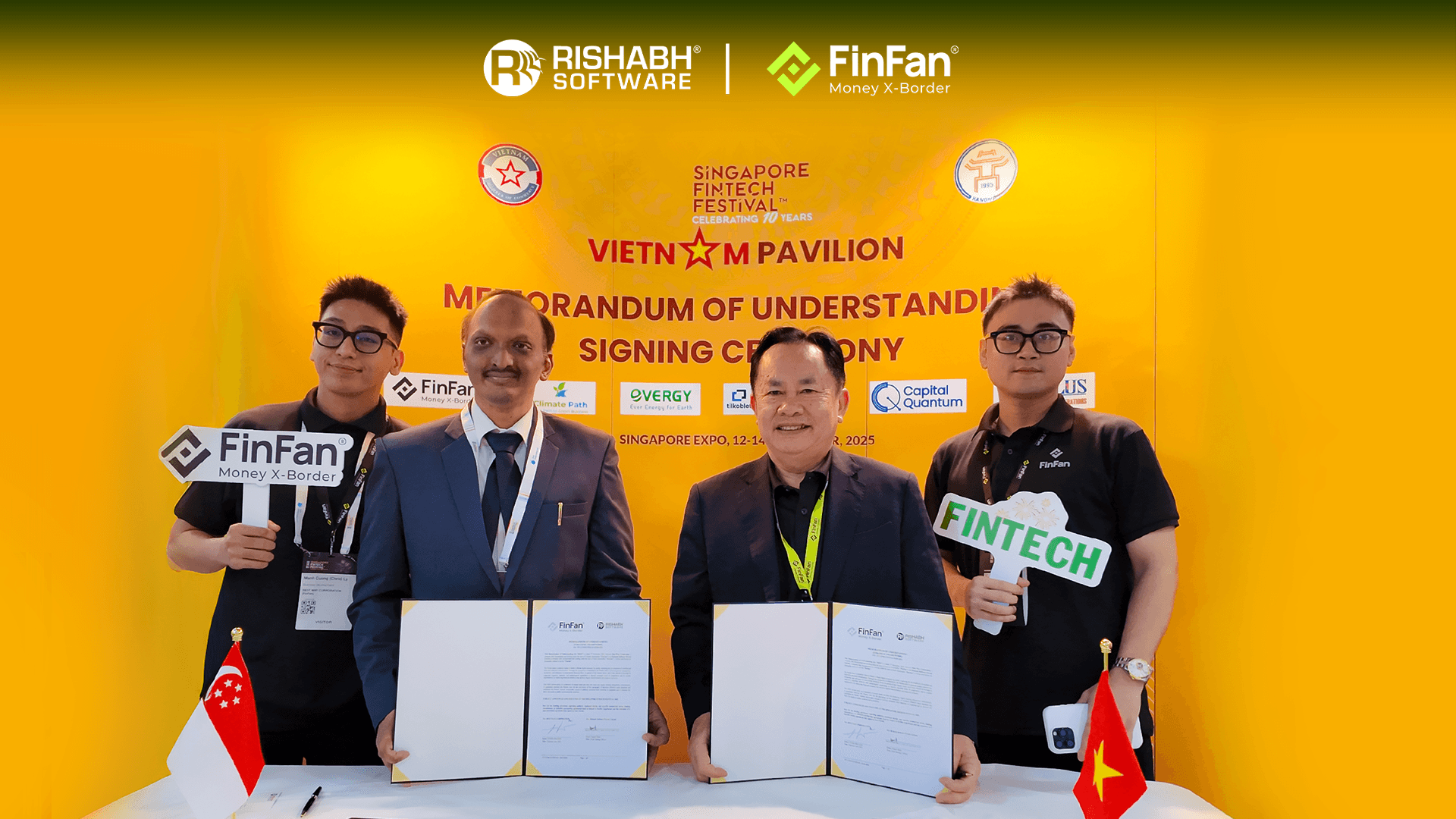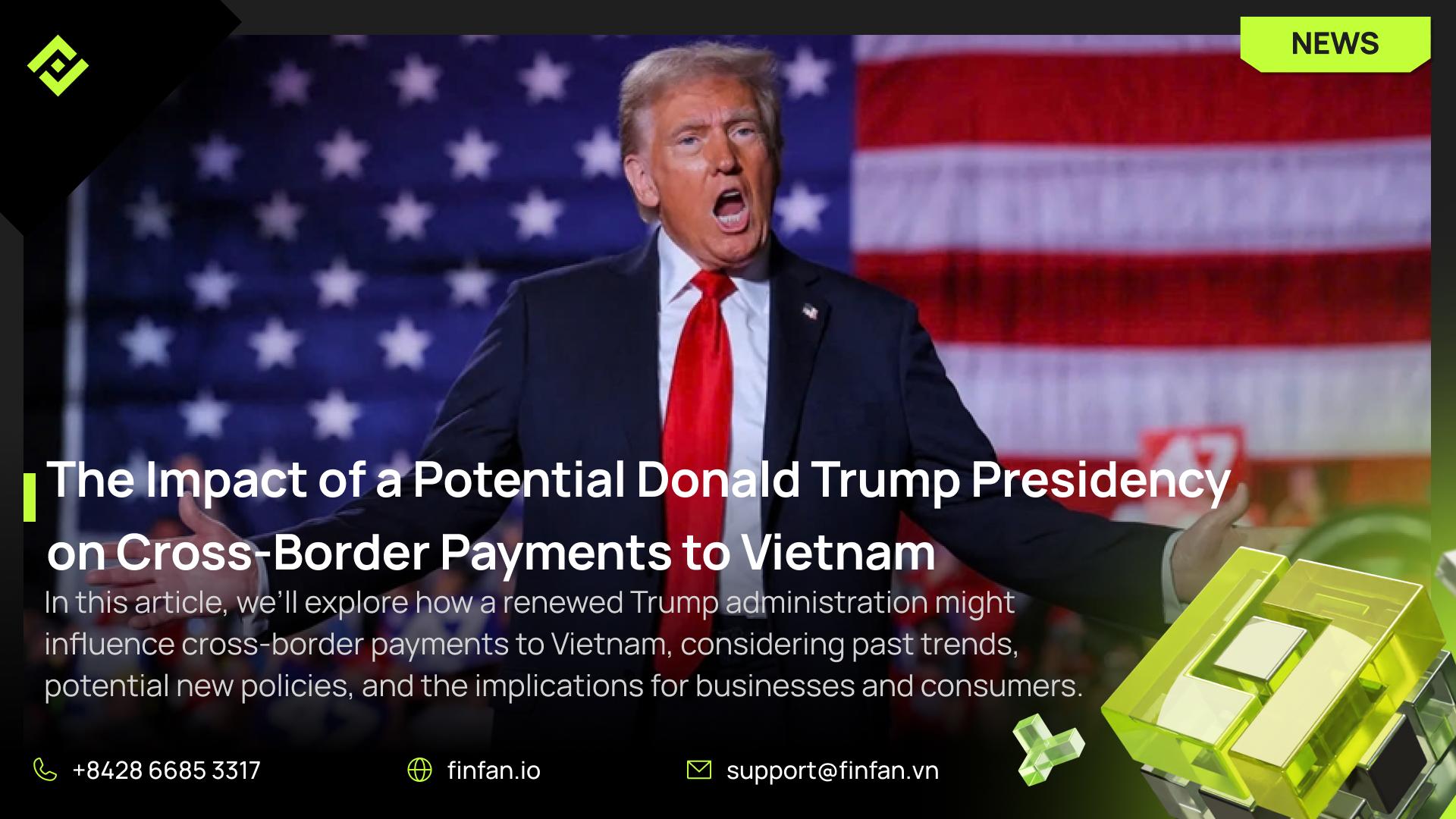New Milestone for QR Code Payments - Reflecting on the Development Journey of Payment Methods in Vietnam Over Recent Years

Recently, the announcement that users in Vietnam can now make cross-border QR code payments with Cambodia, Thailand, and in a pilot phase with Laos, has marked a new milestone in the development journey of cross-border payments for Vietnam.
This advancement signifies the increasing modernization and growth of Vietnam's payment methods, further affirming the nation's position in the region and expanding its reach globally, as Vietnam has established the highest level of diplomatic relations in both economic and political spheres with major countries around the world such as the United States, China, the European Union, Russia, and others.
In this article, let us join FinFan in reflecting on the development journey of payment methods in Vietnam over the past years.
Early Stages: Cash is the Most Popular Payment Method in Vietnam
Historically, cash has been the predominant method of payment in Vietnam. The preference for cash transactions was deeply rooted in the cultural and economic practices of the country.
Everything began after beginning to integrate into the market economy in the 1980s and 1990s, Vietnam was a poor and developing country.
Banking was not a widely known concept in Vietnam at that time, and most people conducted transactions and exchanges using cash.
This led to an increasing amount of cash in circulation, culminating in a hyperinflation crisis that caused the Vietnamese currency to depreciate by 320% in 1987.
The Rise of Card Payments: When the Use of Cards Became a Trend in Payment Methods
Before the System of NAPAS existed (from 2000 to 2014)
In this stage, the landscape began to change with the advent of technological advancements and increasing internet penetration.
Vietnam began to promote the payment of salaries through bank cards, initially encouraging people to shift from the habit of cash payments and savings to using cards.
However, each bank had its own card system, and an ATM card issued by one bank could not be used at another bank's ATM, which was inconvenient for users.
Moreover, transferring money from one bank account to another was a time-consuming process, requiring extensive procedures and documentation, sometimes taking up to 2 business days. Additionally, the cost of transferring funds between banks was relatively high at that time.
Therefore, Vietnamese banks started considering collaborations to form alliances, aiming to resolve these issues.
The System of NAPAS Has Appeared (from 2014 till now)
NAPAS was formed through the merger of banking alliances in Vietnam. In November 2012, two major alliances, Smartlink and Banknetvn, agreed to merge and valued their assets.
On December 22, 2014, the Prime Minister allowed Banknetvn and Smartlink to merge, and on December 25, 2014, Banknetvn and Smartlink officially signed the merger agreement.
When the final and most crucial condition was passed, the National Payment Corporation of Vietnam was established, with the State Bank of Vietnam as the largest shareholder to oversee and manage its operations.
The collaboration between the two card alliances enabled users to make card payments anytime, anywhere, as long as the store had card swipe machines or ATMs. With the ability to withdraw money from any ATM, transferring funds between customers also became more convenient.
Consumers benefited the most, and banks themselves profited as users found it more convenient, leading to increased card issuance, card-based spending, and customer loyalty.
On April 24, 2016, the National Payment Corporation of Vietnam introduced the national card brand - NAPAS (National Payment Services).
The State Bank of Vietnam proposed consolidating all domestic cards in the market under the NAPAS brand, alongside the issuing banks' brands, to make it easier for users to identify.
Communication with customers regarding payments, withdrawals, and interbank transfers also became easier because there was now a common name to refer to.
Investment funds could now be centralized, reducing waste, and NAPAS could allocate these funds to more useful purposes.
Digital Wallets and Mobile Payments: New Trends of Payment Methods coincided with the rapid growth of smartphone technology.
The E-Wallet Empire Began to Flourish with the Emergence of MoMo.
2014 is perhaps the year that saw the emergence and development of various new technologies, from the establishment of the NAPAS universal card system mentioned earlier to the establishment and first trial run in the market of the mobile wallet application named MoMo.
Launching with an impressive campaign that leveraged the advantage of small, local convenience stores as sales points, MoMo quickly attracted numerous registrations and application downloads in its early years.
By 2016, MoMo officially entered the fintech startup race when it received investments from two major players Goldman Sachs and Standard Chartered to begin its journey to becoming a technology unicorn in Vietnam.
Read more:
. Should Fintech be capitalized on in Southeast Asia countries?
Following MoMo's success, major financial players also entered the e-wallet market. Notable among them are ZaloPay by the VNG Corporation, following a trend similar to China's WeChat Pay, and VNPay by the Vietnam Payment Solution Joint Stock Company.
Simultaneously, major e-commerce companies like Shopee also established their own e-wallets, such as ShopeePay, as an integrated payment method within their platforms.
Read more:
The development of MoMo and other e-wallets has paved the way for an era of receiving remittances in Vietnam that is 'Faster - Safer - More Cost-Effective' for users.
Since 2021, FinFan, along with Vietnamese e-wallets such as MoMo, ZaloPay, VNPay, and international cross-border payment partners specializing in remittances like Remitly, Ria Money Transfer, MoneyGram, and Paysend, have been researching and developing an e-wallet aggregator product. This allows international users to remit money directly to domestic e-wallets in just three simple steps.
- A demo of the service by Ria Money Transfer, in collaboration with FinFan and ZaloPay, showcases this innovation.
.png)
Step 1: Sender in abroad countries log in to Ria Money Transfer account.
🖥 On computer: Through the website: https://www.riamoneytransfer.com
📱 Download the app on the app store:
o Appstore: search for the keyword Ria Money Transfer
o Google Play: search for the keyword Ria Money Transfer
Step 2: Make a money transfer order, then enter recipient information and select ZaloPay payment method (information must match the phone number registered to the reciepient's ZaloPay account).
Step 3: Complete the money transfer order and the money will be transferred directly to the recipient's ZaloPay account.
Note: The steps in phases 2 and 3 can substitute ZaloPay with other e-wallet payment methods commonly used by users in Vietnam, such as MoMo, VNPay, and others.
- A demo of the service by MoneyGram, in collaboration with FinFan and MoMo, showcases this innovation.

Step 1: Sender in abroad countries log in to MoneyGram account.
🖥 On the computer: Through the website: https://www.moneygram.com/mgo/us/en/
📱 Download the app on the app store:
o Appstore: search for the keyword MoneyGram
o Google Play: search for the keyword MoneyGram
Step 2: Make a money transfer order, then enter recipient information and select MoMo payment method (information must match the phone number registered to the recipient’s MoMo account).
Step 3: Complete the money transfer order and the money will be transferred to the Recipient via MoMo, after FinFan has completed the transaction processing.
Note: The steps in phases 2 and 3 can substitute MoMo with other e-wallet payment methods commonly used by users in Vietnam, such as ZaloPay, VNPay, and others.
- A demo of the service by Remitly, in collaboration with FinFan and MoMo, showcases this innovation.

Step 1: Sender in abroad countries log in to Remitly account.
🖥 On the computer: Through the website: https://remitly.com
📱 Download the app on the app store:
**o Appstore: **search for the keyword Remitly
o Google Play: search for the keyword Remitly
Step 2: Make a money transfer order, then enter recipient information and select MoMo payment method (information must match the phone number registered to the recipient’s MoMo account).
Step 3: Complete the money transfer order and the money will be transferred to the Recipient via MoMo, after FinFan has completed the transaction processing.
Note: The steps in phases 2 and 3 can substitute MoMo with other e-wallet payment methods commonly used by users in Vietnam, such as ZaloPay, VNPay, and others.
The Explosion of Mobile Payments has Compelled Banks to Participate in the Digital Transformation of the Banking Sector.
The primary reason MoMo has garnered significant trust and usage is that it laid the foundation for the e-wallet market. However, the strong growth of MoMo cannot be attributed to this alone.
The emergence of COVID-19 also made in-person shopping and payment increasingly inconvenient, prompting customers to seek an online payment solution that ensures safety without direct contact.
They needed a way to make payments while staying at home and having goods delivered to their doorsteps, all with just their phones.
Consequently, mobile payment solutions have rapidly developed in the Vietnamese market, forcing banks to engage in digital transformation and quickly launch digital banking services to meet these demands.
The Formation of the First Digital Bank Began in 2016.
Launched for the first time in 2016 with only one physical branch, its headquarters on Pasteur Street, District 1, Ho Chi Minh City, Timo was then a relatively unfamiliar name in the banking industry.
The bank's strategy aimed at digitizing payment in the banking sector without the need to expand too many transaction counters nationwide.
With its fledgling position, Timo collaborated with the banking giant VPBank to introduce virtual card products that supported users in making payments for all expenses directly through their phones without the need to visit transaction points or shops in person.
This product quickly gained traction among Vietnamese youth due to its convenience compared to traditional banks available in the market at that time, where transactions required physically presenting cards at payment points and conducting card swipes for successful transactions.
This process posed significant inconvenience and high risks of information theft and card loss when users inadvertently dropped or forgot their cards in public places such as restaurants, clothing stores, etc.
The rapid development alongside the convenience of virtual debit card products has propelled other traditional banks to accelerate their digital transformation.
Subsequently, a series of digital banks from traditional banks emerged, such as Vietcombank Digibank, Tien Phong Digital Bank, VP Bank's Cake digital bank, Ocean Bank's digital bank, and so on.
From there, the integration of virtual debit/credit card payment methods has become one of the leading payment methods used in the Mobile Payment segment today.
Read more:
However, this method still faces many user-related issues, such as the risk of mistyped account numbers during input.
Users continue to desire an alternative payment method that supports them with just a touch or a few simple steps, without the need to input account numbers and recipient names to address this limitation in payments. Thus, contactless payments, QR Codes, were born.
The Formation of the First QR Code Payment Method Began in 2017.
In 2017, VNPAY introduced QR code payment technology, maximizing the existing banking infrastructure and the advantage of personal mobile devices to bring forth a new, secure, and convenient payment method for both sellers and buyers.
With this solution, customers can now utilize QR code payment feature on Mobile Banking apps of various banks, in addition to using cards/bank accounts, to swiftly conduct transactions on e-commerce websites or at points of sale that accept VNPAYQR payments.
It can be said that due to the convenience mentioned above, other major e-wallet players such as MoMo, ZaloPay, and leading digital banks have also collaborated with VNPay to create a QR Pay payment ecosystem, linking banks with each other and e-wallets seamlessly.
Moreover, Zalo has even developed a feature where the recipient enters their bank account number, and the sender only needs to scan the QR code and proceed with the payment steps quickly.
Blockchain and Cryptocurrency
In the previous article discussing the potential implementation of the first CBDC project in Vietnam, FinFan mentioned the formation and development of the defi payment market utilizing blockchain technology, specifically cryptocurrency.
Read more:
. Whether Vietnam Should Have Its Own CBDC or Stablecoin to Support Remittance
Also in a previous analysis, FinFan clarified why the acceptance of cryptocurrency has become strong in Vietnam and why individuals can earn significant profits in this emerging currency market.
However, despite its significant potential for development in the Vietnamese market, cryptocurrency, like other modern payment methods initially, must undergo a challenging trial phase until suitable solutions are found and clear regulations from the State Bank of Vietnam regarding its operation are established.
Conclusion Regarding the History of Payment Methods in Vietnam
The journey of payment methods in Vietnam over recent years highlights a remarkable shift from traditional cash transactions to a more diverse and technologically advanced payment ecosystem. This transformation has not only facilitated economic growth but also paved the way for greater financial inclusion. As Vietnam continues to embrace digitalization, the evolution of payment methods will undoubtedly play a central role in shaping the country's financial landscape.
This article was curated and authored by FinFan's market research and development team, alongside our marketing department.
About FinFan
FinFan is a cross-border embedded financial services company that focuses on mass disbursement, fund collection, card processing, IBAN, and digital APMs solutions, which can provide valuable input and integration on and for the same.
FinFan is already integrated with almost the world's well-known MTOs, PSPs, switch, and core fintech platforms such as Money Gram, Thunes, Qiwi, Remitly, World Remit, Bancore, PaySend, Terrapay, Ria Money Transfer (Euronet), Dlocal, Ripple, TripleA, FoMo Pay, Wings, etc.
For more information, please contact us through: 🌐https://finfan.io
📞(+84) 2866 85 3317
✉ support@finfan.vn
LinkedIn: FinFan





